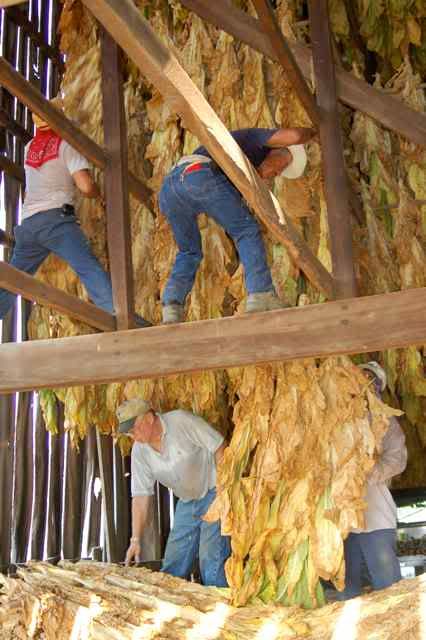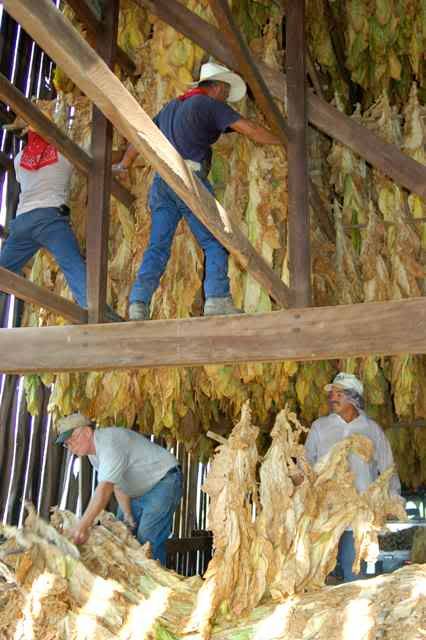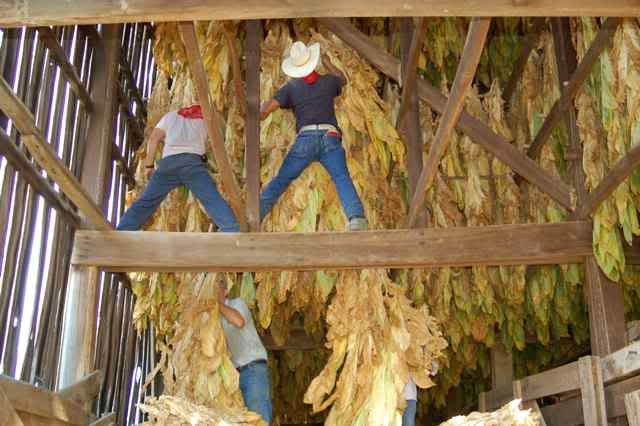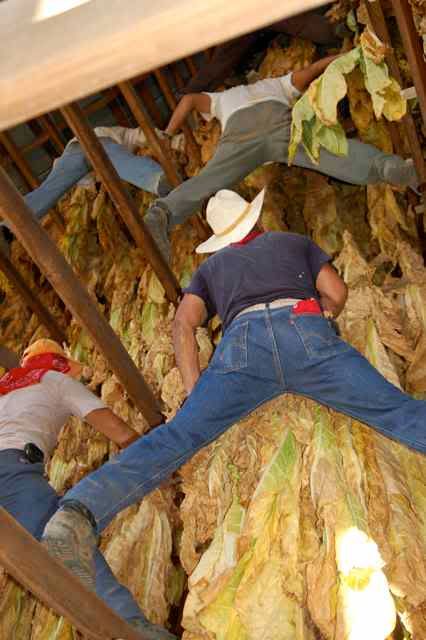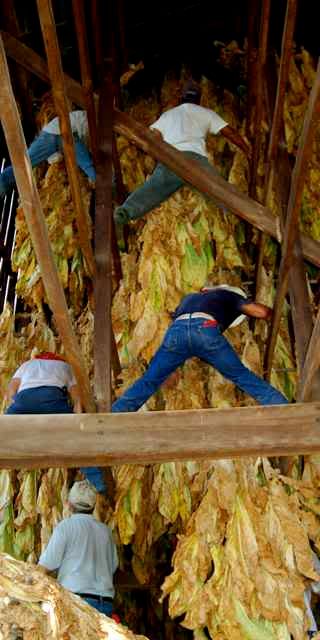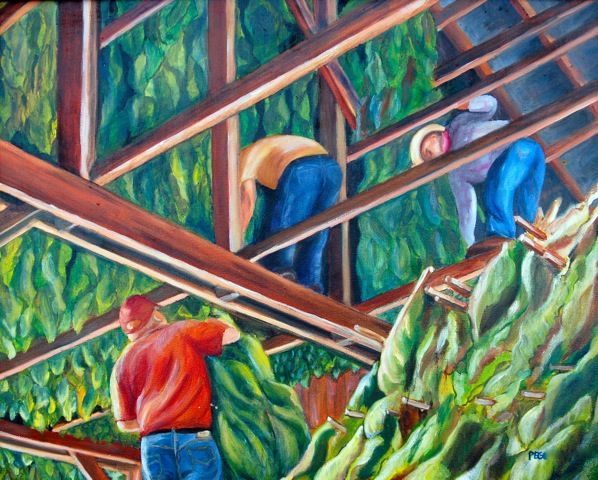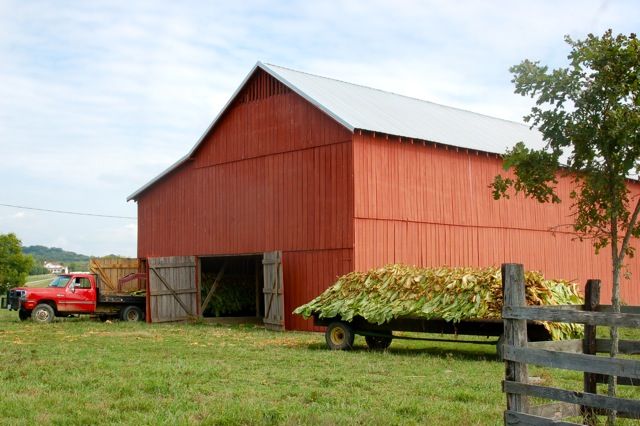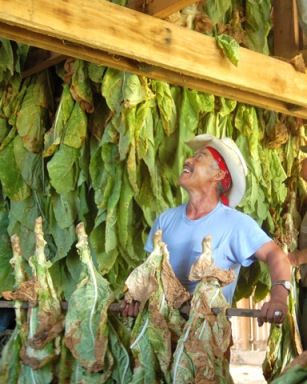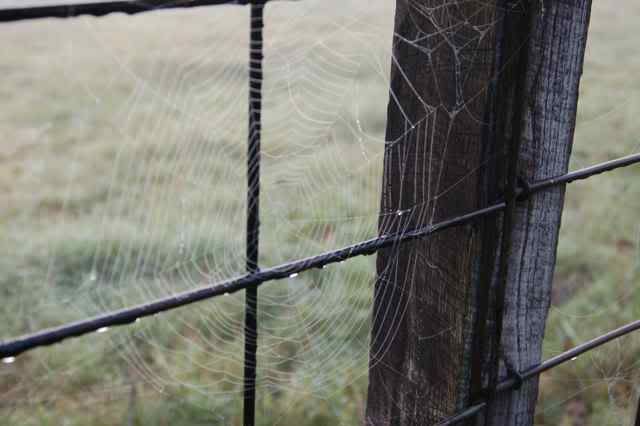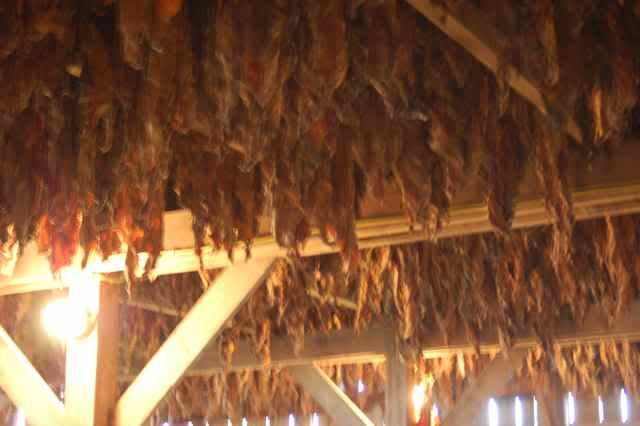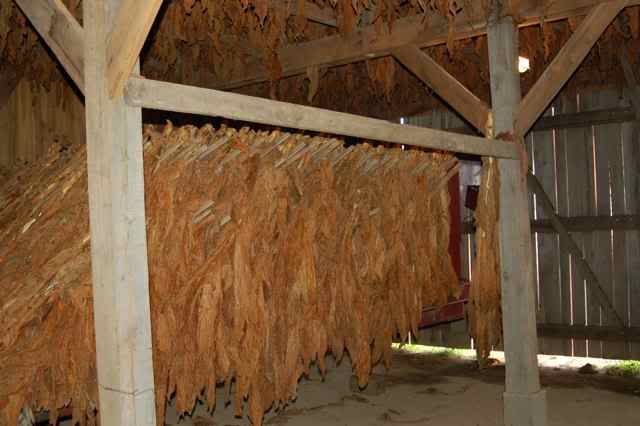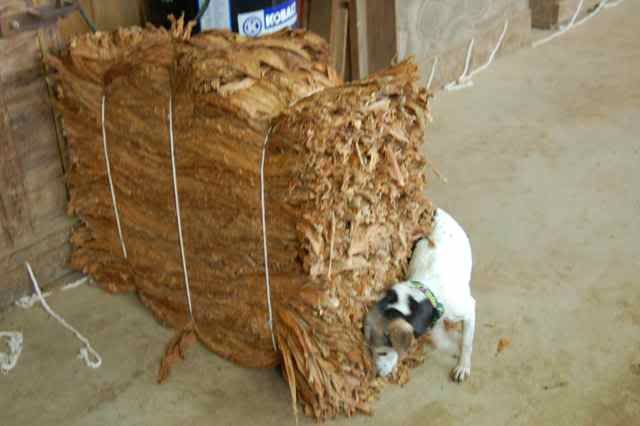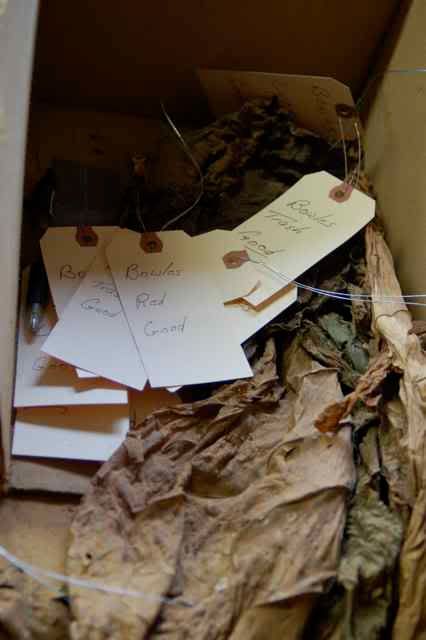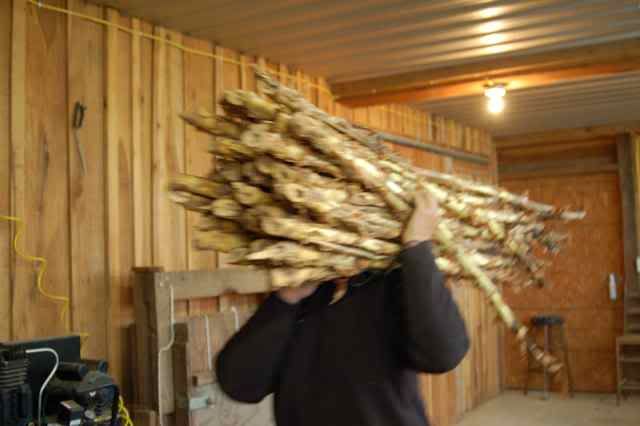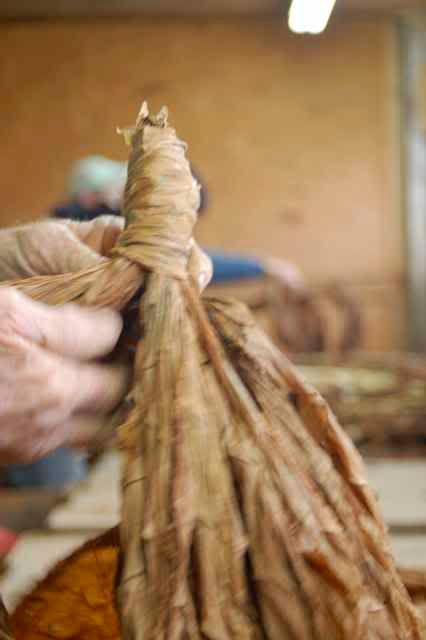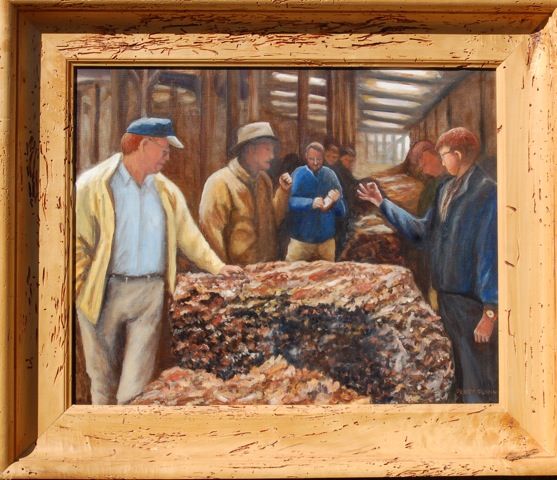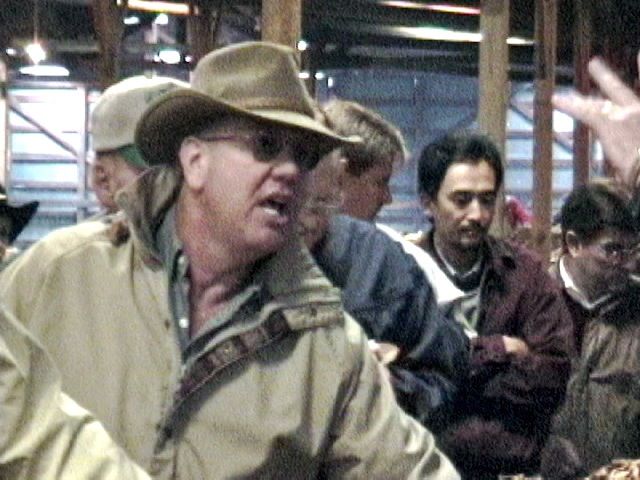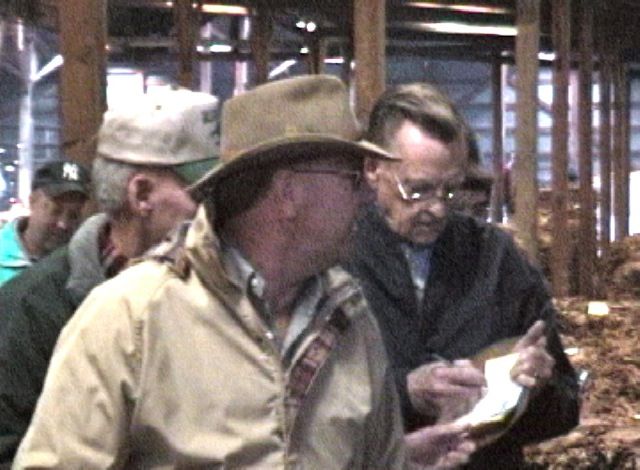I've just finished these two paintings of workers on our farm preparing burley tobacco for market. The process is called "stripping" since the leaves are stripped from the stalk and sorted into grades.
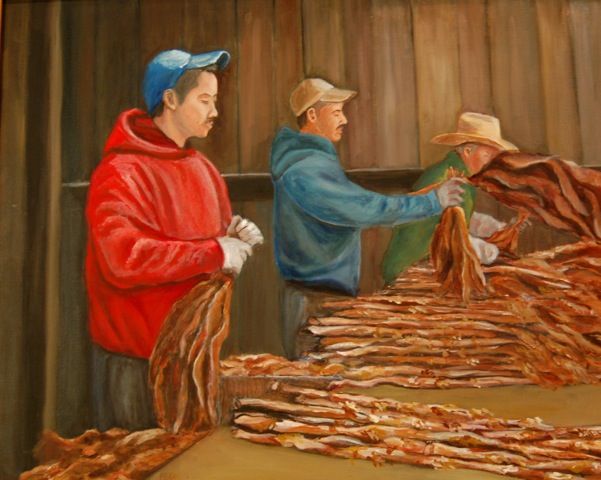 |
"Winter Work"
16x20 oil on canvas |
The painting above will hang over Pa's desk along with four others that tell the story of growing burley. The painting below will be a gift to the worker I painted.
 |
"Stripping Tobacco"
16x20 oil on canvas |
Several years ago on another blog I detailed the process of stripping tobacco. Here is an exert from that post:
October 20, 2009
Yesterday was a foggy October morning so I ventured out with my camera...
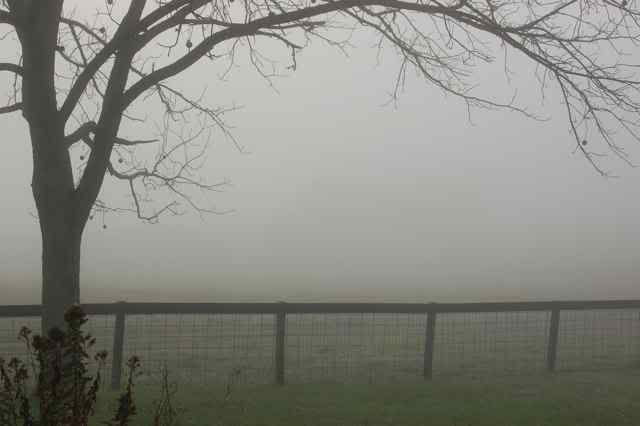
crossed over the fence where I discovered a sparkly spider web,
and headed up the path to the tobacco barn...

where I got to watch some G-rated "strippers."
Before you get too excited, I should tell you that the process of removing the leaves from the stalks is called stripping tobacco.

Back in August when the tobacco was hung in the barn, it was a yellowish green. After two months or so in the barn, the leaves have turned a golden brown.
On damp, foggy mornings, tobacco takes on moisture or "comes in order" and becomes pliable enough to be taken down without crumbling. It's carefully stacked onto wagons and carried to the stripping room.
Pa and his workers remove the leaves from the stalks.
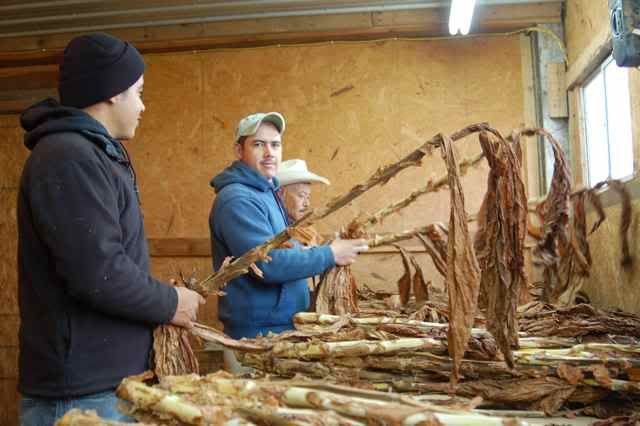
They sort the leaves into four grades according to color and stalk position.

Each worker pulls off a different type of leaves and passes the stalk down the line.

They work under the watchful eye of their supervisor, Kate.
The piles of leaves are carried to specially-made baling boxes and stacked according to grades.
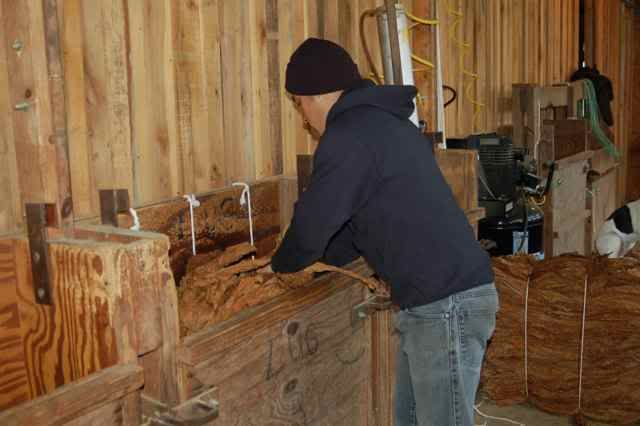
When a bin is full, the leaves are compressed into a bale with an air jack.
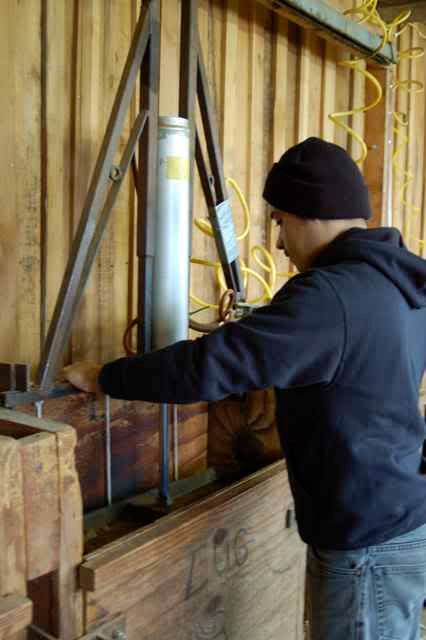
Kate finds the finished bales useful for scratching her back.
The bales are carefully tagged according to grade and quality.
Out go the empty stalks! They will be spread on the pasture land as organic fertilizer.
Tobacco has been sold in bales for only the past twenty years or so. Before that, it was stripped into bundles called "hands" of tobacco. While at the barn, I asked Pa to tie up a couple of the old-fashioned hands to hang up on the porch.
He gathered the leaves in his hand and carefully arranged them.
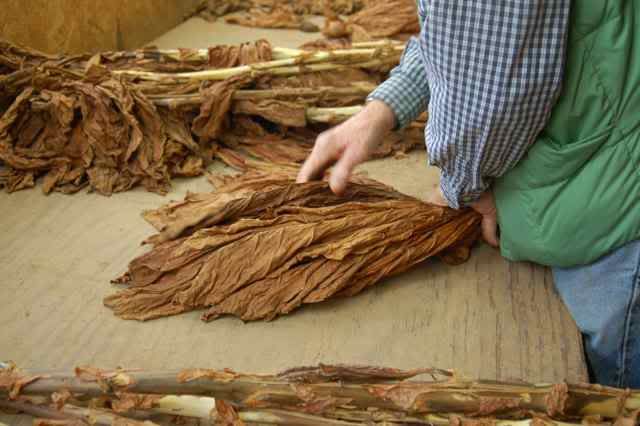
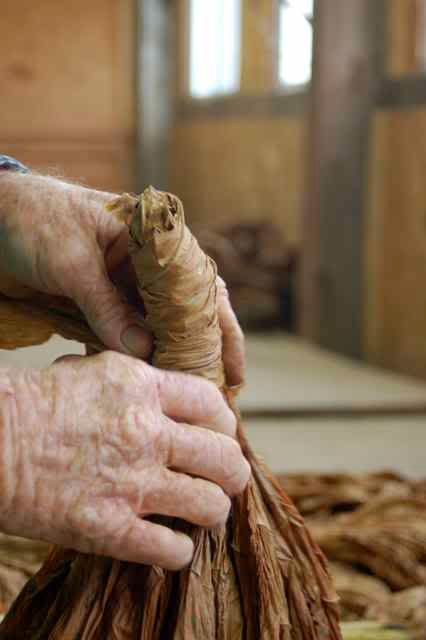
Then he took a single leaf and wrapped it around the stem ends of the leaves.
Finally, he tucked the wrapper leaf between the others in the bundle to secure it.

The hands of tobacco were artfully arranged on those big wooden tobacco baskets that are often found in antique shops today. In November and December, the crop was sold at auction in big tobacco warehouses located in almost every town. It was an exciting time of year for farm families. Now the crop is simply delivered to tobacco companies at receiving stations... the romance of a bygone era is only a memory.
